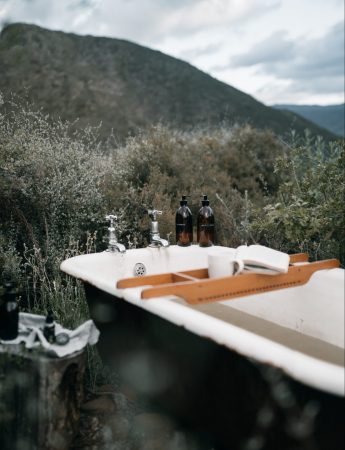Being a more eco-friendly beauty warrior is not always an easy task – the industry is riddled with marketing jargon, promises and loopholes. When you’re committed to buying truly eco-friendly you have to read all the small text. So start here, by arming yourself with the basics. We decode what these common labels mean so you can make the most informed purchases that your skin will love.
Cruelty-free
This is an eco-friendly beauty label that vegans will be on the lookout for. It indicates that no animals were used or involved in the testing the products or the ingredients used in them. But don’t get confused: a product may be cruelty-free and still contain animal ingredients. So being cruelty-free doesn’t always mean it is vegan! Then there is the is the question of palm oil. There’s more to come on this, but palm oil is an ingredient responsible for devastating thousands of hectares of rain forests – and all the animals that live there. Not quite cruelty-free. While the legislated definition of of cruelty-free may mean one thing, there is more to the story. As we advise with all labels, read everything carefully.
Certified organic
This means the product doesn’t contain any GMOs, manufactured herbicides, artificial fertilisers, synthetic colours, preservatives or chemicals. When you purchase products that are certified organic, you can be sure that more sustainable land management is involved. However, while this is a good indicator of eco-friendly beauty products there are still things to be weary of. Even if the ingredients are sustainably sourced they may be tested on animals, contain animal by-products or palm oil.
Vegan
If products are labelled vegan they will contain no animal by-products. But that doesn’t immediately mean they are truly eco-friendly beauty buys. When it comes to these cosmetics, you’ll need to check if they contain palm oil, or if the ingredients are organic and natural. Shockingly, some vegan products may still be tested on animals!
Palm-oil free
Palm oil is an edible vegetable oil from the fruit of Elaeis guineensis, oil palm tress. It is found in nearly everything we buy – close to 50% of all the packaged products we pickup off supermarket shelves, from doughnuts, chocolate and deodorant to shampoo, toothpaste and lipstick! Why? It’s an extremely versatile oil that has many different properties and functions. Plus it is safe for both topical use and ingestion.
Unfortunately if your cosmetics include palm oil there is very little chance that it is truly an eco-friendly beauty product. It has only recently though that the sad truth about palm oil has been properly acknowledged. The mass production of palm oil is responsible for the extreme devastation of rain forests. It is a major driver of deforestation and so destroys the habitat of precious animals – some being the orangutang, pygmy elephant and Sumatran rhino.
But there is a ray of light, and it’s in the Roundtable of Sustainable Palm Oil (RSPO). It is an initiative that supports a sustainable palm oil industry. The RSPO has a standard that ensures any palm oil produced is done so under strict guidelines and standards. These are the kinds of initiatives that create a better more eco-friendly beauty industry.
 Reef-friendly
Reef-friendly
We hardly ever consider sunscreen when we think of eco-friendly beauty. When you find the label ‘reef-friendly’ it means that your choice of sunscreen will not include oxybenzone, butylparaben, octinoxate, octocrylene or 4-methylbenzylidene. These are the ingredients that could possibly have a damaging impact on coral reefs, harming the larvae and reducing its immunity. Make sure your sunscreen is a mineral blocker, rather than a chemical one, if you plan on swimming in the ocean. Our Beauty Editor has a great option for adults and kiddies alike.

